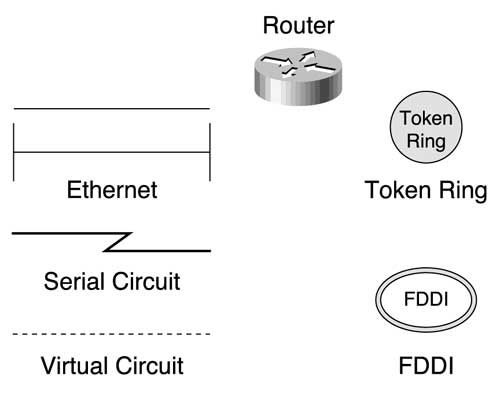Conventions and Features
| Most chapters conclude with a set of review questions, configuration exercises, and troubleshooting exercises. The review questions focus on the theoretical aspects of the chapter topic, whereas the configuration and troubleshooting exercises address Cisco-specific aspects of the chapter topic. Also at the end of each chapter is a table with a brief description of all important Cisco IOS commands used in that chapter. The conventions used to present these commands are the same conventions used in the IOS Command Reference. The Command Reference describes these conventions as follows :
Important concepts are called out in margin notes for quick reference. Figure I.1 shows the conventions used in the illustrations throughout the book. Figure I.1. Illustration conventions used in this book. All protocol analyzer displays shown in the book are taken from a Wandel & Goltermann DA-320 DominoLAN Internetwork Analyzer. |
